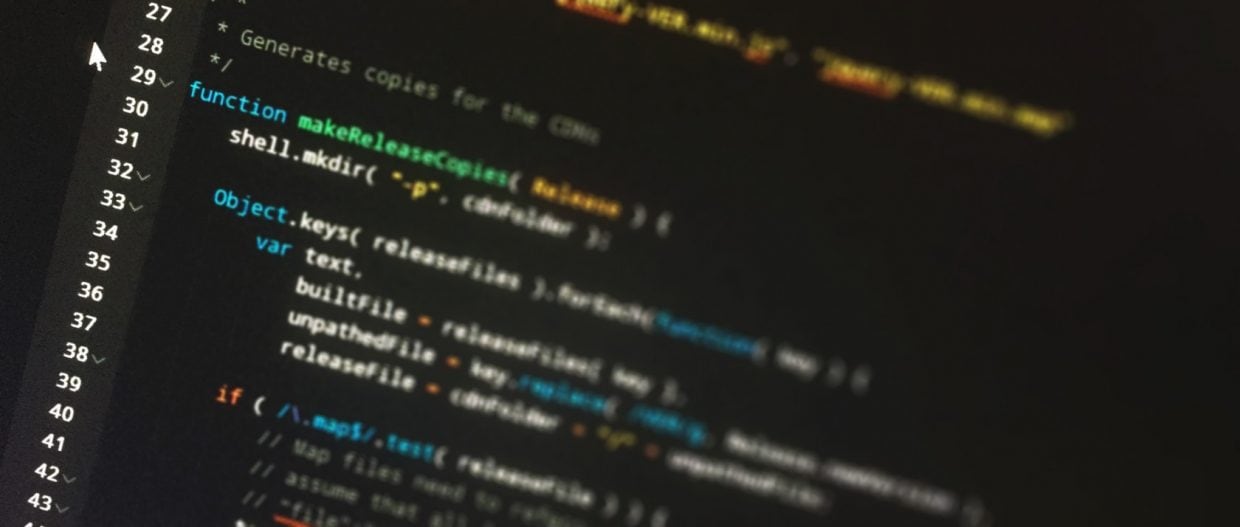Modern Web & JavaScript Frontend Framework Essentials
It is most commonly used as part of web browsers, whose implementations allow client-side scripts to interact with the user, control the browser, communicate asynchronously, and alter the document content that is displayed. JavaScript (at least the strict subset asm.js) is also considered an “assembly language of the web” – a compile target of source-to-source compilers – for making client side web applications, using other programming languages, supported by all the major browsers without plug-ins. It is also used in server-side network programming with runtime environments such as Node.js, game development and the creation of desktop and mobile applications.
JavaScript Design Patterns Introduction
In the first part of this book, we will explore the history and importance of design patterns which can really be applied to any programming language. If you’re already sold on or are familiar with this history, feel free to skip to the chapter “What is a Pattern?” to continue reading.
Design patterns can be traced back to the early work of an architect named Christopher Alexander. He would often write publications about his experience in solving design issues and how they related to buildings and towns. One day, it occurred to Alexander that when used time and time again, certain design constructs lead to a desired optimal effect.
Responsive & Mobile Design
RWD allows easy reading and navigation with a minimum of resizing, panning, and scrolling—across a wide range of devices (from mobile phones to desktop computer monitors). A site designed with RWD adapts the layout to the viewing environment by using fluid, proportion-based grids, flexible images,and CSS3 media queries, an extension of the @media rule.
Responsive web design is becoming more important as the amount of mobile traffic now accounts for more than half of total internet traffic. This trend is so prevalent that Google has begun to boost the ratings of sites that are mobile friendly if the search was made from a mobile device. This has the net effect of penalizing sites that are not mobile friendly.
Getting Started with NodeJS: Simple HTTP Server
External LinkNode.js uses an event-driven, non-blocking model that makes it lightweight and efficient, perfect for data-intensive real-time applications that run across distributed devices. This simple web server written in Node responds with “Hello World” for every request. To run the server, put the code into a file example.js and execute it with the node program from the command line.
Intro to User Experience & Interface Design
Mountain ranges are usually segmented by highlands or mountain passes and valleys. Individual mountains within the same mountain range do not necessarily have the same geologic structure or petrology. They may be a mix of different orogenic expressions and terranes, for example thrust sheets, uplifted blocks, fold mountains, and volcanic landforms resulting in a variety of rock types.
I don’t believe you have to be better than everybody else. I believe you have to be better than you ever thought you could be.
Ken Venturi
A mountain range is a geographic area containing numerous geologically related mountains. A mountain system or system of mountain ranges, sometimes is used to combine several geological features that are geographically (regionally) related.
Effective Use of Whitespace in Minimal UI Design
Mountain ranges are usually segmented by highlands or mountain passes and valleys. Individual mountains within the same mountain range do not necessarily have the same geologic structure or petrology. They may be a mix of different orogenic expressions and terranes, for example thrust sheets, uplifted blocks, fold mountains, and volcanic landforms resulting in a variety of rock types.
I don’t believe you have to be better than everybody else. I believe you have to be better than you ever thought you could be.
Ken Venturi
A mountain range is a geographic area containing numerous geologically related mountains. A mountain system or system of mountain ranges, sometimes is used to combine several geological features that are geographically (regionally) related.
Syntax Highlighter
Onyx includes our ‘Ecko Blocks’ plugin, which introduces additional features to the Code core Gutenberg block. These features include language specific syntax highlighting, multiple color schemes, line numbers, and support for popular languages (complete list can be found below).
Color Schemes
// This is an example of the 'Light' color scheme
function wp_get_time(){
if(get_theme_mod('layout_use_custom_date_format', false)){
the_date();
}else{
the_time('jS F Y ');
}
}// This is an example of the 'Dark' color scheme.
function wp_get_time(){
if(get_theme_mod('layout_use_custom_date_format', false)){
the_date();
}else{
the_time('jS F Y ');
}
}// This is an example of the 'High Contrast' color scheme.
function wp_get_time(){
if(get_theme_mod('layout_use_custom_date_format', false)){
the_date();
}else{
the_time('jS F Y ');
}
}Line Numbers
If you wish to display line numbers along with a Code block this an be enabled via the included options. Below is an example Code block using line numbers with the Dark color scheme.
const http = require('http');
const hostname = '127.0.0.1';
const port = 3000;
const server = http.createServer((req, res) => {
res.statusCode = 200;
res.setHeader('Content-Type', 'text/plain');
res.end('Hello World\n');
});
server.listen(port, hostname, () => {
console.log(`Server running at http://${hostname}:${port}/`);
});Supported Languages
- Apache
- Bash
- C#
- C++
- CSS
- CoffeeScript
- Diff
- HTML/XML
- HTTP
- Ini
- JSON
- Java
- JavaScript
- Makefile
- Markdown
- Nginx
- Objective-C
- PHP
- Perl
- Python
- Ruby
- SQL
- DNS Zone File
- Dart
- Dockerfile
- Elm
- Erlang
- Go
- Haml
- Handlebars
- Haskell
- Haxe
- Less
- Rust
- SCSS
- Swift
- Haxe
- Typescript
- YAML
Below is a preview of some of the above languages being highlighted.
HTML / CSS
<!DOCTYPE html>
<html>
<body>
<h1>My First Heading</h1>
<p>My first paragraph.</p>
</body>
</html>.wrapper{
max-width: 1400px;
width: 100%;
@media (max-width: 1470px) {
padding: 0 2.5%;
}
}Python
def openFile(path):
file = open(path, "r")
content = file.read()
file.close()
return contentRuby
def self.consume_front(str, size)
str[0..size] = ''
str.lstrip!
endBash
ls -la /homePHP
function ivy_get_time(){
if(get_theme_mod('layout_use_custom_date_format', false)){
the_date();
}else{
the_time('jS F Y ');
}
}






